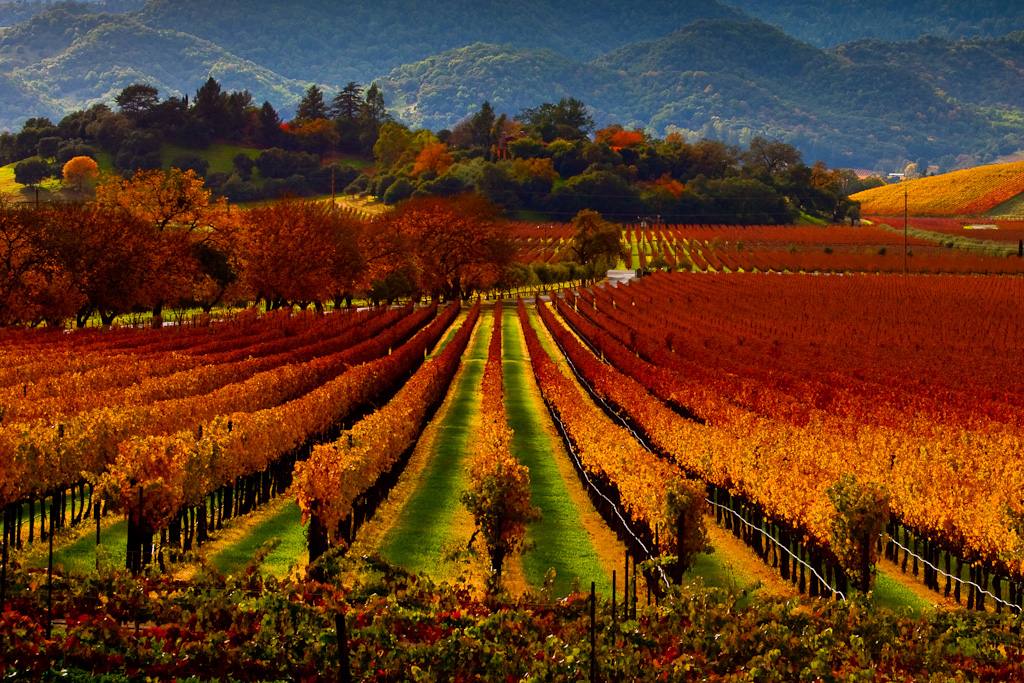Let’s think about wine for a moment. Generally, wine comes in two colours: red and white. Each colour has some common grape varieties. Thousands of brands sell many of these varieties, and almost no one can reliably taste the difference between, say, the Merlot of one winery against another. Yet the world’s obsession with wine shows that people will happily pay extra for certain brands or varieties once they encounter the stories behind them, even if they can’t taste the difference.
Destinations can learn two lessons from this.
What makes a wine (or a destination) unique? Terroir.
Terroir is the exotic idea that “wine can taste like it comes from someplace.” What does this mean? It’s an understanding of the context for how the wine was created. This includes factors like the winery, its history and location; the grapes, the climate, the soil, the vintage; even the wine maker – these are all aspects that affect terroir.
Richard Betts is one of the world’s 115 master sommeliers. Listen to how he describes terroir in this interview. Betts says that wine has a “sense of place” based on where it came from. When you think of it this way, drinking a glass of wine is like “taking a trip to a different place.”
A wine’s terroir makes each wine unique through the story it tells. It creates context and meaning. Betts says that where the vineyard is located is “fundamentally important – it’s everything.” Thanks to terroir, a glass of wine becomes more than a drink – it becomes an experience. The rational brain can’t tell the difference between wines very easily. But with each sip, the emotional brain takes a trip to different places around the world, and that’s very powerful.
Destination marketing has its own terroir – this is the destination DNA. A destination’s “sense of place” is its DNA identity. What makes the destination distinct? The destination DNA is shaped by its history, people and culture; its climate and geography; the environment; the economy and more. This DNA shapes a destination’s experiences, just like terroir shapes a wine. For example, a ski resort in the Alps offers different experiences than a ski resort in Colorado because of the context and identity that make each place distinct.
Related reading: Why your destination needs to find its unique selling proposition
Storytelling makes your destination come to life
Have you ever attended a wine tasting, or talked to a sommelier in a good restaurant? Then you’ll know that it’s all about theatre and storytelling. A beautiful winery or restaurant is the stage, and the stories are about the wine and everything that went into making it. All the aspects of terroir come together into an irresistible narrative – and all of a sudden, the wine tastes much better.
Destination marketing should be the same. Since your destination’s DNA shapes the experiences, unique storytelling should be the result. To continue the ski example, stories about a resort in the Alps should be different from a resort in Colorado, because the DNA gives visitors a unique context in each location.

Image credit: Vašek Vinklát, Flickr
Why visit your specific destination? A well-told story will begin to answer this important question. Stories create emotional context, and context differentiates one place from another. This evokes the desire to travel, creating urgency for the experience.
Your destination will taste better to travellers when you tell stories based on its DNA.
Related reading: Why place branding must be built from the inside
Featured image credit: Malcolm Carlaw, Flickr











For terroir is word which translate heritage, traditional, knowledge of wine. All this word in link of wine, vineyard.
Nice post William Bakker this is the first time i am visiting your blog will check other post later (bookmarked )
thanks for sharing
Great Post. your post about lessons from the wine industry for destination marketers. I like your second point that “Storytelling makes your destination come to life”.
Thank you for your thoughts, Danny. Glad you enjoyed the post!
One of the emerging tourist attraction has been vineries for a long time now. This can maybe be attributed to the culture surrounding wine and how it is perceived as a very sophisticated drink for adults.